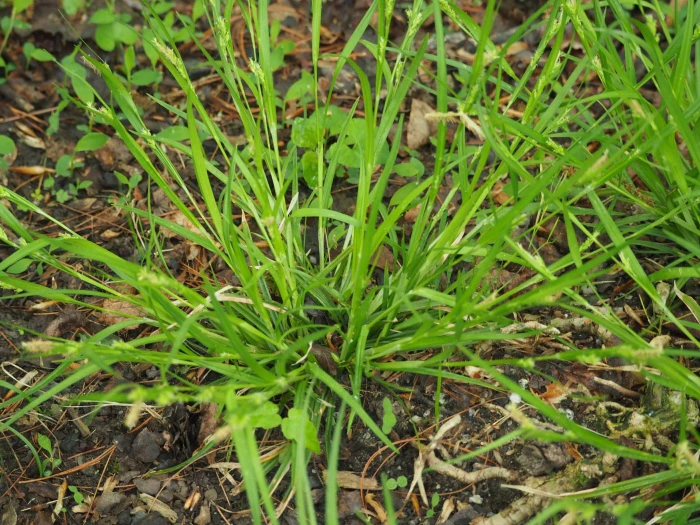Creek Sedge
(Carex amphibola)
Creek Sedge (Carex amphibola)
/
/

mefisher
Public Domain
Image By:
mefisher
Recorded By:
Copyright:
Public Domain
Copyright Notice:
Photo by: mefisher | License Type: Public Domain | License URL: http://creativecommons.org/publicdomain/zero/1.0/ | Rights Holder: mefisher | Publisher: iNaturalist | Date Created: 2019-04-26T09:02:41-07:00 |
























Estimated Native Range
Climate Requirements for Merrillville, Indiana
| This Plant | Your Site | Plant Suitability for Your Location | ||
|---|---|---|---|---|
| • Precipitation | 27" - 75" | 38" | Aquatic | Aquatic |
| • High Temp. | 61°F - 97°F | 85°F | Your summer temperatures are normal for this plant. | Excellent |
| • Low Temp. | 3°F - 50°F | 14°F | Your winter temperatures are normal for this plant | Excellent |
This plant should grow well at your location with about N inches per year (Y minutes per month) of irrigation.
Summary
Carex amphibola, commonly known as Creek Sedge, is a semi-evergreen perennial grass native to a variety of habitats including moist woodlands, floodplains, and along stream banks in the Southeastern USA. It typically grows to a height and width of 1-2 feet (0.3-0.6 meters), forming dense clumps of fine-textured, arching foliage. The plant features inconspicuous greenish-brown flowers in late spring to early summer, which are not particularly showy but add a subtle texture to the landscape.
Creek Sedge is valued for its adaptability and use as a ground cover in shaded areas, where it can form a dense carpet that suppresses weeds and stabilizes soil. It is often used in rain gardens, woodland gardens, and as a naturalizing element in informal borders. This sedge thrives in part shade but can tolerate full shade, and while it prefers consistently moist soils, it can adapt to medium moisture levels. It is generally low-maintenance, but occasional division may be necessary to manage its spread.CC BY-SA 4.0
Creek Sedge is valued for its adaptability and use as a ground cover in shaded areas, where it can form a dense carpet that suppresses weeds and stabilizes soil. It is often used in rain gardens, woodland gardens, and as a naturalizing element in informal borders. This sedge thrives in part shade but can tolerate full shade, and while it prefers consistently moist soils, it can adapt to medium moisture levels. It is generally low-maintenance, but occasional division may be necessary to manage its spread.CC BY-SA 4.0
Plant Description
- Plant Type: Grass, Grass
- Height: 1-1.5 feet
- Width: 1-1.5 feet
- Growth Rate: Moderate
- Flower Color: N/A
- Flowering Season: Spring
- Leaf Retention: Semi-Deciduous
Growth Requirements
- Sun: Part Shade
- Water: Medium
- Drainage: Medium, Slow
Common Uses
Bird Garden, Deer Resistant, Fire Resistant, Groundcover, Low Maintenance, Street Planting, Water Garden
Natural Habitat
Moist woodlands, floodplains, and stream banks in the Southeastern USA
Other Names
Common Names: Eastern Narrowleaf Sedge, Gray Sedge, Amphibious Sedge, Eastern Narrow-Leaved Sedge, Gray Sedge, Carex Amphibole
Scientific Names: Carex amphibola, Carex amphibola var. amphibola, Carex grisea var. amphibola, Carex grisea var. minor
GBIF Accepted Name: Carex amphibola Steud.